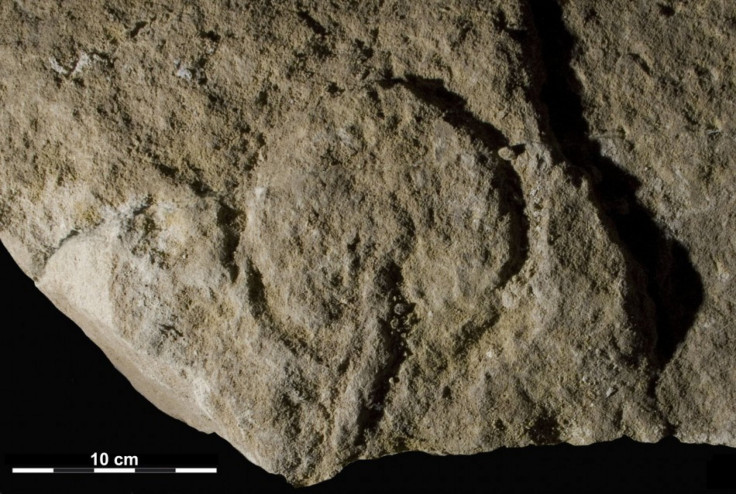Ancient Female Genitalia Carving Could Be Older Than ?Cave Of Forgotten Dreams? Paintings

A one-and-a-half metric ton slab of limestone found at the Abri Castanet site in southwestern France is speckled with tool marks and carvings -- including one of female genitalia -- that could be the oldest wall art ever discovered.
In the journal Proceedings of the National Academy of Sciences on Monday, a team of American and French anthropologists say the carvings on the slab, which once formed part of the roof of a rock outcropping that ancient humans used for shelter, appear to have been created about 37,000 years ago.
One of the two most identifiable carvings depicts what looks like a human vulva. The other shows the front half of an animal, possibly a bison, according to the paper.
The carvings were made by people belonging to a culture that researchers call Aurignacian, which existed roughly 45,000 to 28,000 years ago.
Aurignacian humans had complex social identities, and they expressed themselves in relatively modern ways - through personal ornaments, sculpture and graphic arts, according to lead author and New York University anthropologist Randall White.
The carvings on the ceiling weren't made by anything akin to modern engraving techniques, by rather by someone pecking at the stone with a chisel-like tool, White says.
He or she should have been able to reach up and touch the ceiling, which scientists have determined was only about 2 meters (6.5 feet) off the floor.
To peg the engravings to a certain time period, the scientists performed radio-carbon dating on animal bones that were found beneath the block. Because there was very little sediment accumulated between the underside of the block and the surface where the bones were found, the researchers think that very little time passed between when the figures were engraved and when the ceiling collapsed.
The carvings on the limestone ceiling of the shelter appear to be older than the famous paintings in Grotte Chauvet, the subject of the documentary Cave of Forgotten Dreams by famed filmmaker Werner Herzog.
But White cautioned that the difference the team found between the radio-carbon ages of the slab and the Chauvet paintings was not statistically significant.
We're not in a position to argue with 100 percent statistical certainty that Castanet is older, he said.
The site was discovered around World War I, but the ceiling fragment analyzed by White and his colleagues wasn't unearthed until 2007. The team worked carefully to remove the slab in pieces, in order to better understand where the ceiling's features were in relation to the various living areas underneath.
Abri Castanet wasn't always treated with such care.
Early archaeologists more or less ripped finds out of the ground without much concern for context, White says.
And context is key: The Abri Castanet find isn't just important because of its age or what it depicts. What really distinguishes it from Grotte Chauvet is the setting, White says. Grotte Chauvet is deep underground, while the rock shelter was open to the sun and the scene of many daily activities.
This adds a big piece to our understanding of the origins of graphic expression, White says.
© Copyright IBTimes 2024. All rights reserved.











